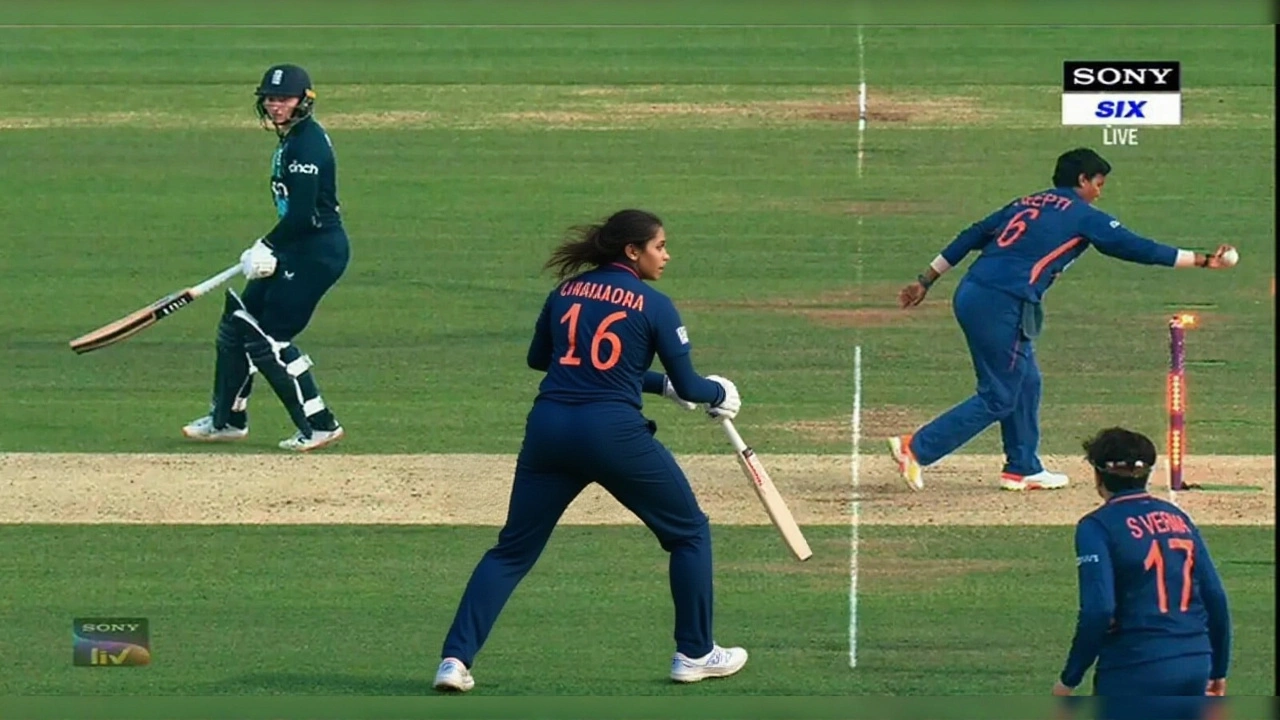Deepti Sharma’s Mankading Fallout and Redemption in Navi Mumbai Test

When Deepti Sharma, the Indian off‑spinner, ran out England’s Charlie Dean at the non‑striker’s end on September 24, 2022, the cricket world erupted.
The dismissal—legal under Law 41.16 but often labeled Mankading—sparked a firestorm of debate about sportsmanship versus the letter of the law. Fast‑forward to December 15, 2023, and the same spinner rewrote the conversation in her favour during a one‑off women’s Test match in Navi MumbaiNavi Mumbai, claiming a spectacular 5‑for‑7 spell after posting a gritty 67‑run half‑century.
Background: The 2022 Mankading Controversy
The September incident unfolded during India’s women’s tour of England, a series that attracted more than 200,000 spectators across the three‑match ODI leg. As Dean backed up too far from her crease, Sharma, poised to bowl, dislodged the bails before releasing the ball. The umpire gave Dean out, and the dismissal was instantly replayed on stadium screens, social media feeds, and cricket forums worldwide.
Fans in the UK were quick to label Sharma "the most infamous cricketer in the UK" for a moment, while pundits in India defended her, reminding everyone that the rule exists to prevent the batting side from gaining a cheap advantage. Former England captain Heather Knight later said, "It’s within the laws, but it hurts the spirit. We need to discuss it, not vilify the player."
Redemption in Navi Mumbai: A Spell of 5/7
On a damp, turning pitch at the Navi Mumbai ground, Sharma entered the fray in the 26th over of England’s second innings. The turn was pronounced; the ball – a looping off‑spinner at 120 km/h – snagged the surface and spun sharply.
She bowled 5.3 overs, delivering four maidens and claiming five wickets for merely seven runs. The wicket‑tally included top‑order batters Nat Sciver‑Brunt and Tammy Beaumont, both trapped leg‑before‑wicket to a delivery that barely cleared the bat. England were bundled out for 136 runs in 35.3 overs, a total that fell 44 runs short of the target.
Sharma’s performance was bolstered by fellow off‑spinner Sneh Rana, who yielded 2 for 25 in six overs. Together, they dismantled England’s batting line‑up, inducing a collapse where the last seven wickets fell for just 28 runs in 61 balls. The final six wickets evaporated for a mere ten runs in under half a minute.
Earlier in the same Test, Sharma had already contributed 67 runs, making her the second Indian woman ever to pair a half‑century with a five‑wicket haul in a single Test match. The first was the legendary Anjum Chopra in 2006.
Reactions from Players and Officials
After the match, Indian captain Harmanpreet Kaur praised Sharma’s resilience: "Deepti showed what a true professional looks like. She turned a moment of criticism into a moment of pride for our team." England’s coach Mark Robinson admitted his side was caught off guard, saying, "We underestimated the spin on that surface. It was a masterclass in exploiting conditions."
The International Cricket Council (ICC) later released a statement emphasizing that while the law permits a run‑out at the non‑striker’s end, national boards are encouraged to promote the spirit of the game through player education. The BCCI echoed this, noting that Sharma’s 2022 incident “served as a teaching moment for all teams.”
What This Means for Women’s Cricket
The twin narratives – controversy and redemption – have reignited discussions on how women’s cricket is covered compared to the men’s game. Media outlets that condemned Sharma in 2022 faced criticism for gendered language, with some observers pointing out that male bowlers have long employed similar tactics without comparable backlash.
Statistically, the 5‑for‑7 figures rank among the best bowling analyses in women’s Test history. According to the ICC’s database, only 12 instances exist where a bowler has taken five wickets while conceding fewer than ten runs in a Test. Sharma now joins an elite group that includes Cathryn Fitzpatrick and Shashikala Chakraborty.
Looking Ahead: Future Tests and the Spirit Debate
As the Indian and England women’s teams prepare for the upcoming summer series in England, both sides are expected to tighten up their back‑foot techniques against spin. Coaches have already scheduled extra net sessions focusing on “back‑foot play” and “run‑out awareness”.
Meanwhile, the ICC has announced a review panel to examine potential amendments to Law 41.16, aiming to strike a better balance between fairness and the sport’s ethos. Whether the rule will be revised or merely clarified remains to be seen, but Sharma’s journey from vilified to celebrated will likely be cited as a case study.
- Sept 24 2022: Sharma’s Mankading dismissal of Charlie Dean (England)
- Dec 15 2023: Sharma’s 5/7 spell in Navi Mumbai Test
- Only second Indian woman to score a fifty and take five wickets in the same Test
- England bowled out for 136 in 35.3 overs
- ICC to review Law 41.16 on non‑striker run‑outs

Frequently Asked Questions
How did Deepti Sharma’s 2023 performance affect her reputation?
The 5‑for‑7 spell in Navi Mumbai shifted public perception from controversy to admiration. Media outlets that once highlighted her Mankading incident now praised her as a game‑changer, noting the rarity of her combined fifty and five‑wicket haul.
What is the rule behind the so‑called Mankading dismissal?
Law 41.16 of the MCC’s Laws of Cricket allows a bowler to run out the non‑striker if they leave the crease before the ball is released. It’s legal, but many view it as unsporting, sparking ongoing debate about the sport’s spirit.
Who were the key players alongside Sharma in the Navi Mumbai Test?
Off‑spinner Sneh Rana supported Sharma with 2 for 25, while captain Harmanpreet Kaur contributed crucial runs in the first innings.
What changes might the ICC consider after the recent debate?
The ICC has formed a review panel to possibly amend Law 41.16, aiming for clearer guidance on when a run‑out is appropriate and how teams can be educated to respect both the law and the spirit.
How does this incident compare to similar events in men’s cricket?
Men’s cricket has seen several high‑profile Mankadings, most notably by Ben Stokes in 2022. However, women’s cricket has faced heightened scrutiny, making Sharma’s case a focal point for discussions on gender bias in sports coverage.
- October 3, 2025
- Danilo Freemont
- 0 Comments
- Permalink




